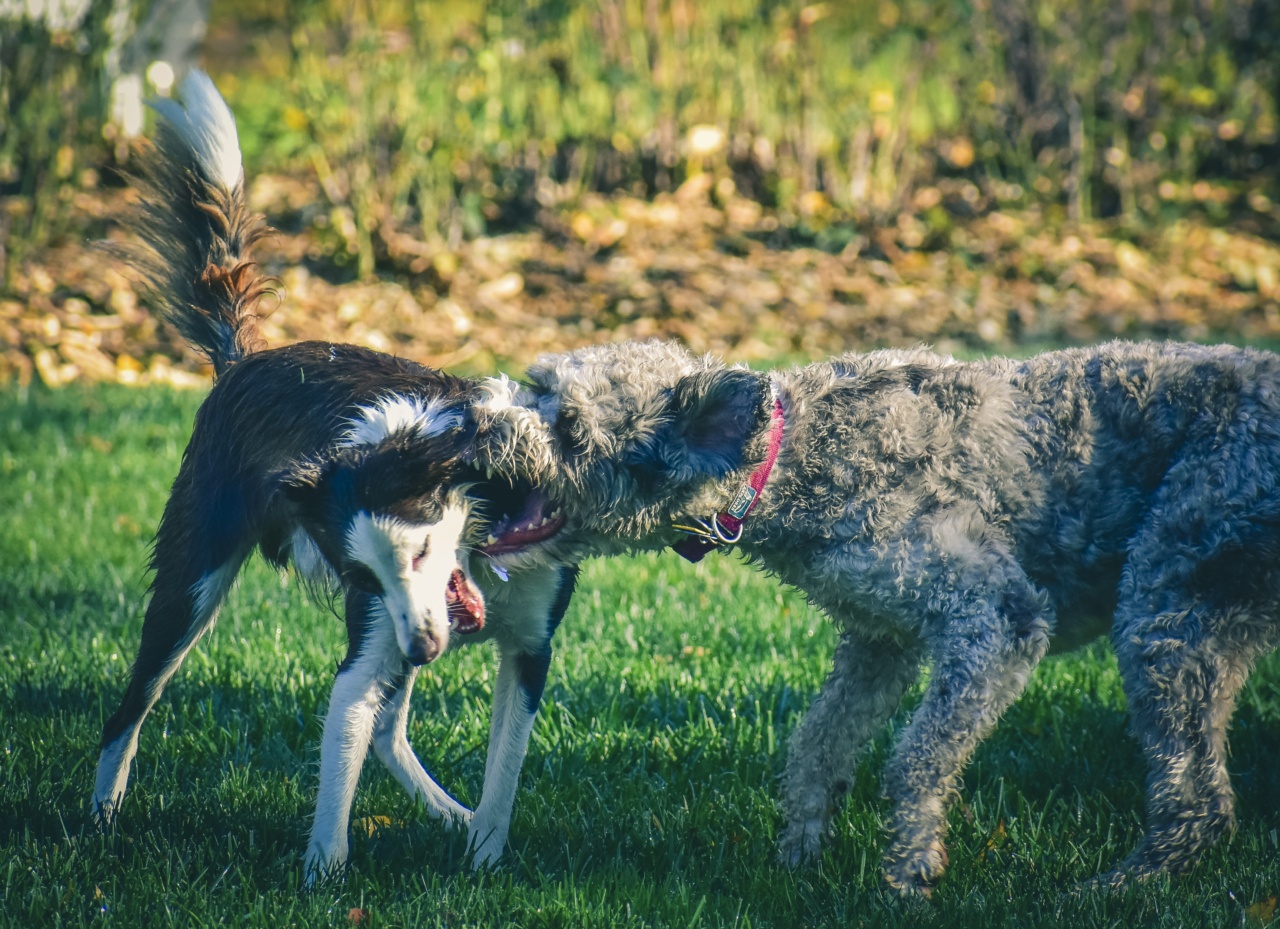Aggression in dogs is a complex and multifaceted issue that can arise from a variety of factors. It is important for dog owners and professionals to understand the potential causes of aggressive behavior in order to effectively address and manage it.
This article will explore some of the possible reasons for aggression in dogs and provide insights into how to deal with this challenging problem.
1. Fear and Anxiety
Fear and anxiety are common triggers for aggressive behavior in dogs. When a dog feels threatened or scared, their natural response may be to become aggressive as a means of self-defense.
This is often observed in situations where a dog feels trapped, cornered, or excessively stressed.
Dogs may also exhibit aggression when they are overly fearful or anxious due to past traumatic experiences, lack of socialization, or genetic predispositions.
It is essential to identify the underlying source of their fear and anxiety in order to address the root cause of their aggression.
2. Lack of Socialization
Proper socialization during a dog’s development stages is crucial for their emotional well-being and behavior as adults.
Dogs that haven’t been adequately exposed to various people, animals, environments, and stimuli may display aggression as a result of fear or uncertainty.
A lack of socialization can lead to a heightened sensitivity, making it challenging for dogs to adapt to new situations or beings.
Gradual and positive exposure to different stimuli, under controlled circumstances, can significantly reduce the likelihood of aggressive behavior stemming from a lack of socialization.
3. Pain or Illness
Dogs in pain or discomfort may display aggression as a defensive mechanism. Canines, like humans, may become irritable and reactive when dealing with physical ailments.
It is essential to rule out any underlying medical conditions or injuries that could be contributing to their aggressive behavior.
If a dog suddenly displays aggressive tendencies that are out of character, a visit to the veterinarian should be a top priority. Treatment and management of the underlying medical issues may resolve or alleviate the aggression.
4. Resource Guarding
Resource guarding is a common form of aggression in dogs. This occurs when a dog perceives a particular item, territory, or even a person as its possession and becomes defensive or possessive over it.
This behavior is often seen around food, toys, beds, or favorite spots.
Resource guarding can be managed and modified through behavior modification techniques and training.
It is crucial for dog owners to work on redirecting their dog’s possessiveness and teaching them appropriate behaviors instead of resorting to aggression.
5. Frustration and Lack of Mental Stimulation
Dogs are intelligent animals that require mental and physical stimulation to prevent boredom and frustration. When a dog’s mental needs are unmet, they may resort to aggressive behaviors as a result of pent-up energy and frustration.
Engaging dogs in regular physical exercise and mental enrichment activities, such as puzzle toys, training sessions, or interactive play, can help alleviate frustration and reduce the likelihood of aggressive outbursts.
6. Genetic Factors
Genetics can play a significant role in a dog’s temperament and predisposition to aggression. Certain breeds may have been selectively bred for protective or territorial qualities, making them more prone to aggressive behaviors.
While genetics can contribute to aggressive tendencies, it is vital to remember that proper training, early socialization, and responsible ownership can help mitigate any potential genetic predispositions to aggression.
7. Learned Behavior
Aggressive behavior can be learned through various experiences and interactions. Dogs that have been exposed to violence, abuse, or inconsistent discipline may develop aggressive tendencies as a result of their learned associations.
It is crucial for dog owners to provide positive reinforcement training, appropriate discipline techniques, and a nurturing environment to prevent the development of aggressive behavior.
Consistency, patience, and professional guidance may be required when rehabilitating a dog with learned aggressive behavior.
8. Traumatic Experiences
Dogs that have undergone traumatic experiences such as physical abuse, neglect, or dogfights may exhibit aggressive behavior as a response to these past traumas.
The flashbacks of their traumatic experiences can trigger fear and cause reactive aggression.
Rehabilitation of dogs with a history of trauma requires patience, understanding, and professional guidance.
Creating a safe and predictable environment, along with positive reinforcement training, can help rebuild trust and reduce aggressive responses.
9. Inadequate Training and Social Boundaries
Inadequate or inconsistent training can contribute to the development of aggressive behavior in dogs. Dogs require clear and consistent guidelines to understand appropriate social boundaries and behaviors.
When dogs are not provided with proper training, they may display aggression as a way of asserting themselves or to communicate their discomfort or frustration.
Positive reinforcement training, ongoing socialization, and structure can help establish appropriate boundaries and prevent the emergence of aggressive behavior.
10. Territoriality
Many dogs display territorial aggression, especially in their perceived safe zones or when strangers approach their territory. This behavior is often seen when people or other animals approach a dog’s home or car.
Managing territorial aggression involves gradual desensitization and counter-conditioning techniques.
Teaching dogs to associate positive experiences with the presence of strangers can help reduce their territorial response and prevent aggressive behavior in these situations.


























